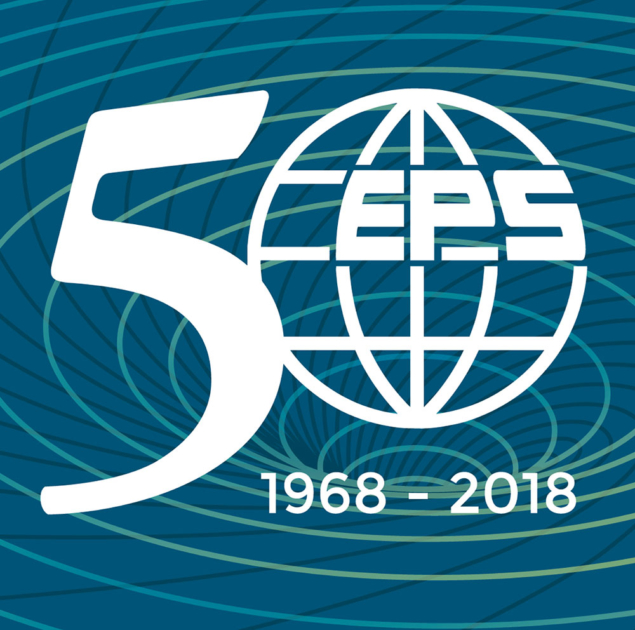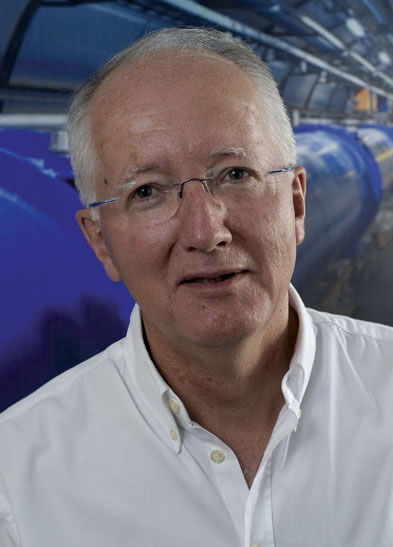As the EPS turns 50, building scientific bridges across political divides remains as vital as ever.

The year 1968 marked a turning point in the history of post-war Europe that remains engraved in our collective memory. Global politics were marked by massive student unrest, the Cold War and East–West confrontation. On 21 August the Soviet Union and other Warsaw Pact states invaded Czechoslovakia to crush the movement of liberalisation, democratisation and civil rights, which had become known as the Prague Spring.
Against this background, it seems a miracle that the European Physical Society (EPS) was established only a few weeks later, on 26 September, with representatives of the Czechoslovak Physical Society and the USSR Academy of Sciences sitting at the same table. The EPS was probably the first learned society in Europe involving physicists from both sides of the Iron Curtain. Ever since, building scientific bridges across political divides has been core to the society’s mission.
The EPS was founded in Geneva not by accident. Whereas CERN did not play a formal role, the CERN model of European cooperation made a substantial impact on the genesis of the new society. CERN was at that time principally an organisation of Western European states, but it had started early to develop scientific collaboration with the Soviet Union and other Eastern countries, notably through the Joint Institute for Nuclear Research in Dubna. Leading CERN physicists – including Director-General Bernard Gregory – were instrumental in setting up the new society; Gilberto Bernardini, who had been CERN’s first director of research in 1960–1961 and was a strong advocate of international collaboration in science, became the first EPS president. From the 20 national physical societies and similar organisations that participated in the 1968 foundation, this has now grown to 42, covering almost all of Europe plus Israel, and representing more than 130,000 members. In addition, there are about 42 associate members – mostly major research institutions including CERN – and, last but not least, around 3500 individual members.
Today, the EPS serves the European physics community in a twofold way: by promoting collaboration across borders and disciplines, through activities such as conferences, publications and prizes; and by reaching out to political decision makers, media and the public to promote awareness of the importance of physics education and research.

The Iron Curtain is history, but the EPS celebrates its 50th anniversary at a time when new, more complex and subtle political divides are opening up in Europe: the UK’s departure from the European Union (EU) is only the most prominent example. While respecting the result of democratic votes, a continued erosion of European unity will undermine fundamental values and best practices that many of us take for granted: free cross-border collaboration, unrestricted mobility of researchers and students, and access to European funding and infrastructures. For almost 30 years now, in Europe, we have taken such freedoms in science as self-evident. Today, prestigious universities in the heart of Europe are threatened with closure on political grounds, while in other countries physicists are jailed for claiming the right to freely exercise their academic profession. These concerns are not unique to physics and must be addressed by the scientific community at large. The EPS, representing a science with a long tradition and highly developed culture of international collaboration, has a special responsibility to uphold these values.
Against this challenging background, the EPS is undertaking efforts to make the voice of the physics community more clearly heard in European science-policy making, principally through a point of presence in Brussels to facilitate communication with the European Commission and with partner organisations defending similar interests. In an environment where funding opportunities are increasingly organised around societal rather than scientific challenges, the EPS must advocate a healthy and sustained balance between basic and applied research. The next European Framework Programme Horizon Europe must not only provide fair access to funds, research opportunities and infrastructure for researchers from EU countries, but should remain equally open to participation from third countries, following the example of the successful association of countries like Norway and Switzerland with Horizon 2020. Building scientific bridges across political divides remains as vital as ever, in the best interest of a strong cohesion of the European physics community.







